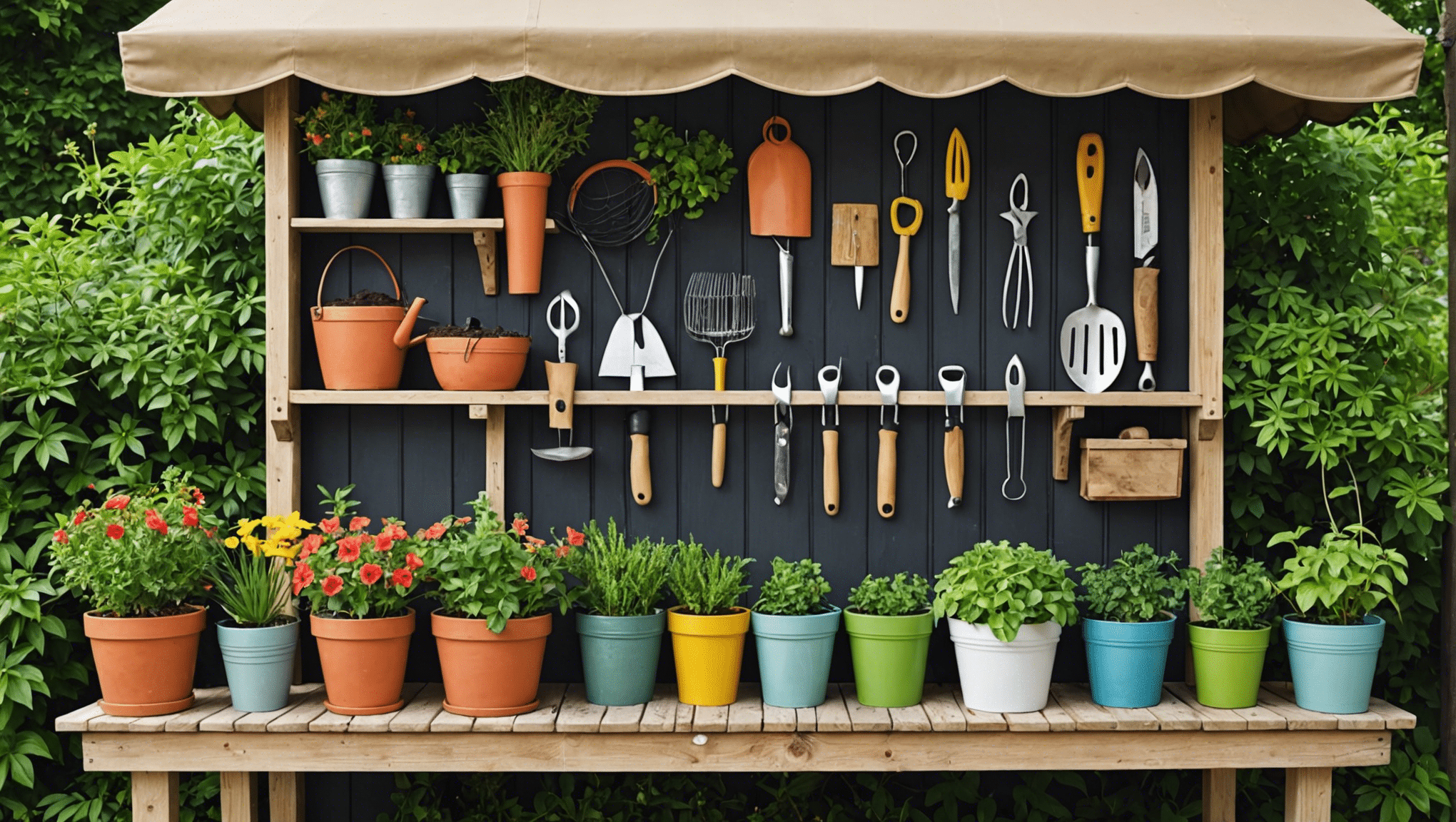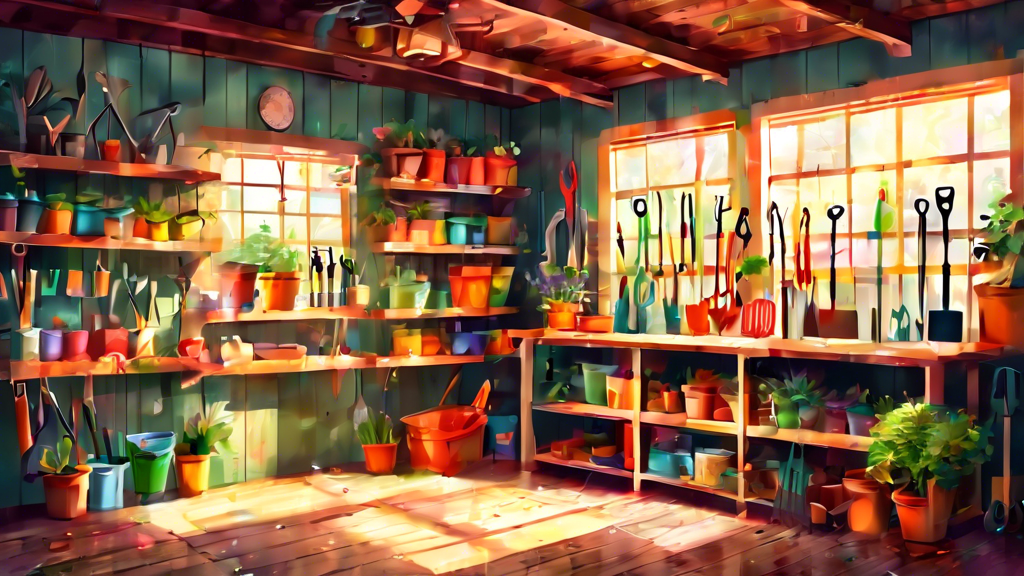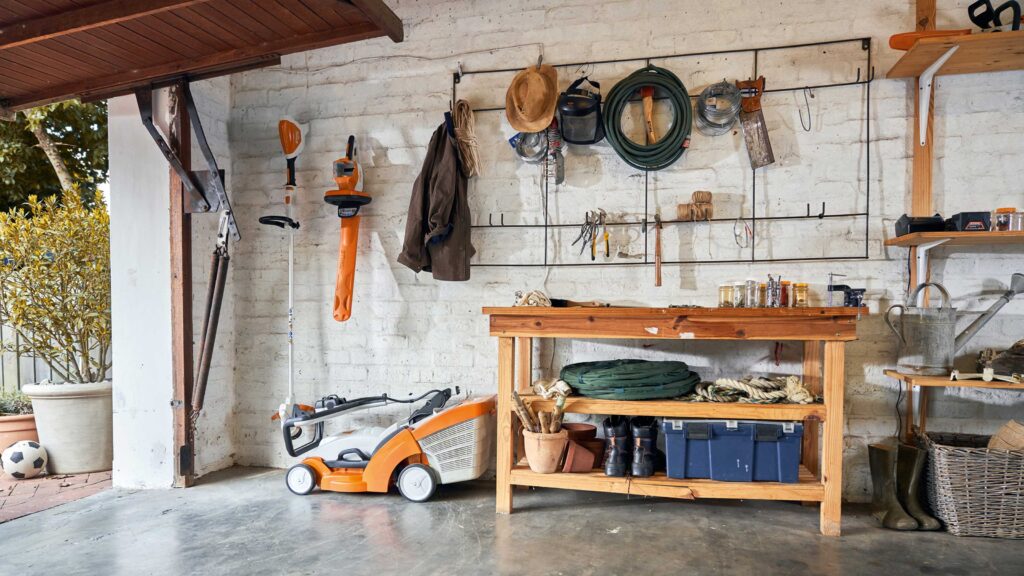blog
How to Organize and Store Your Gardening Tools Efficiently
Gardening is a rewarding and therapeutic hobby that allows you to cultivate beautiful flowers, healthy plants, and even your own food. However, maintaining an organized garden requires more than just knowing how to plant and water your crops; it also requires efficient storage and organization of your gardening tools. A cluttered and disorganized shed can make it difficult to find the right tool when you need it most, leading to frustration and wasted time. Proper organization not only saves time but also helps maintain the condition of your tools, prolonging their lifespan and improving your overall gardening experience.
In this article, we will guide you through the process of organizing and storing your gardening tools efficiently. By following the strategies outlined below, you will be able to keep your tools in excellent condition and easily accessible for all your gardening needs.
1. Assess Your Gardening Tools
Before you begin organizing your tools, it’s important to take stock of what you have. Start by gathering all your gardening tools in one place. This will allow you to see what tools you have, assess their condition, and determine what you truly need.
- Sort Tools by Category: Separate your tools into categories such as hand tools, power tools, and storage containers. This will make it easier to determine where each item should go.
- Inspect the Condition: Check for any tools that may be broken, rusty, or no longer functional. If a tool is beyond repair, dispose of it properly. If you have tools that you rarely use, consider donating or selling them.
- Create an Inventory: Make a list of all your tools and note their condition. Having an inventory will help you track what you own and prevent unnecessary purchases in the future.

2. Choose the Right Storage Location
Once you’ve assessed your tools, the next step is to choose a suitable storage location. Your storage space will depend on the amount and type of tools you have, as well as the available space in your home or garden. There are several storage options to consider:
- Garden Shed: A garden shed is one of the most common and effective ways to store gardening tools. It provides protection from the elements and keeps your tools safe from theft. Ensure the shed is well-ventilated to prevent rusting and has enough space for shelving, hooks, and tool storage racks.
- Tool Cabinet: If you have limited space, a tool cabinet with drawers or shelves can help store smaller tools like trowels, pruners, and gloves. You can keep this in your garage, basement, or utility room.
- Pegboard: A pegboard is an excellent way to hang your tools on the wall, keeping them organized and easy to reach. This is ideal for hand tools and smaller items. Be sure to install hooks and pegs of various sizes to accommodate different tools.
- Storage Bench or Caddy: For those with limited space or who need portable storage, a gardening storage bench or caddy is an excellent option. These can be moved around easily and are perfect for storing hand tools, gloves, and small pots.
- Outdoor Shed with Shelving: If you prefer an outdoor solution, you can install shelves or racks inside your shed. This provides ample space to store larger tools like rakes, shovels, and hoes.
3. Use Vertical Storage for Larger Tools
Larger tools, such as rakes, shovels, hoes, and garden forks, can take up a significant amount of floor space if stored improperly. To maximize your storage efficiency, consider using vertical storage solutions. Here are a few ideas for organizing large gardening tools:
- Wall-Mounted Racks: Install a sturdy wall-mounted rack or a set of hooks to hang larger tools. This will keep the tools off the floor, allowing you to free up space for other items. It also keeps them within easy reach.
- Vertical Tool Rack: If you have several large tools, a vertical tool rack is an excellent solution. These racks are designed to hold tools upright, preventing them from leaning against each other and taking up valuable space.
- Tool Storage Tower: Another option is a tool storage tower. These towers are designed to hold a variety of large gardening tools and keep them neatly organized. The compact design allows you to store many tools in a small area.
- Overhead Storage: If you have high ceilings in your shed or garage, use ceiling-mounted storage systems to hang long tools like ladders and rakes. This keeps them out of the way and frees up valuable floor space for other tools.
4. Organize Smaller Tools in Bins and Containers
Smaller tools such as pruners, shears, trowels, and weeding tools can quickly become disorganized if not properly stored. To keep your smaller tools organized, use bins, containers, or drawer organizers. Here are some strategies for organizing smaller items:
- Tool Bins: Use plastic or metal bins to store hand tools, gloves, and other small items. You can label each bin according to the type of tool it holds (e.g., “pruners,” “hand forks,” or “weeding tools”). Clear bins are especially helpful because they allow you to see the contents without opening them.
- Drawer Organizers: For tools that need to be stored in drawers or cabinets, use drawer dividers or organizers to keep everything in place. This prevents tools from sliding around and getting mixed up.
- Caddies and Trays: A gardening caddy or tray is a portable solution that allows you to keep your essential tools together. These are particularly useful for tasks like weeding or deadheading, as you can carry your tools with you while you work.
- Small Parts Organizer: For small accessories like garden seeds, labels, and plant ties, consider using a small parts organizer with adjustable compartments. This will keep everything in one place and prevent small items from getting lost.
5. Implement a Cleaning and Maintenance Routine
One of the most important aspects of tool organization is maintaining your tools’ condition. Proper care and regular maintenance not only ensure your tools last longer but also keep them functioning efficiently. Here are some steps to include in your maintenance routine:
- Cleaning After Each Use: After every gardening session, make sure to clean your tools thoroughly. Use a stiff brush to remove dirt and debris from the tool’s surface. If needed, soak the tools in warm soapy water to loosen stubborn dirt. Dry them thoroughly to prevent rust.
- Sharpening Blades: Regularly sharpen the blades of your tools, such as pruners, shears, and hoes, to ensure they remain effective. Use a sharpening stone or file to keep the blades in optimal condition. Dull blades can cause more damage to plants and make your tasks more difficult.
- Rust Prevention: To prevent rust, apply a thin coat of oil (such as vegetable or motor oil) to the metal parts of your tools after cleaning. Store your tools in a dry, well-ventilated area to minimize the risk of rust formation.
- Tighten and Replace Parts: Regularly check for loose screws or bolts on your tools and tighten them as needed. If any parts are worn out or broken, replace them promptly. This will prevent further damage and ensure the longevity of your tools.
- Store in a Dry Place: Moisture is one of the biggest threats to gardening tools. Always store your tools in a dry area, whether it’s a shed, garage, or cabinet. If your storage area is prone to dampness, consider using moisture-absorbing products like silica gel packets or dehumidifiers to keep the environment dry.

6. Label and Color-Code Your Tools
Labeling and color-coding your gardening tools can make it easier to find what you need and keep track of your inventory. Here are a few tips for labeling and organizing your tools visually:
- Use Color-Coding: Assign a color to each type of tool to help you quickly identify them. For example, you might use red for cutting tools, green for weeding tools, and blue for planting tools. You can either purchase color-coded tools or apply colored tape to the handles of your existing tools.
- Label Handles: Label the handles of your tools with your name or a description of the tool. This is especially helpful if you share your tools with others or if you have multiple sets of similar tools. Use a permanent marker, adhesive labels, or paint to create clear, durable labels.
- Tagging Small Tools: For smaller tools like hand forks and weeding tools, use small, waterproof tags that can be attached to the handles. These tags can include the tool’s name or a brief description, making it easier to find and identify them when needed.
7. Establish a Routine for Organizing Your Tools
An essential aspect of keeping your tools organized is establishing a routine for maintaining order in your gardening space. By setting up an organizational system and regularly checking it, you can avoid the chaos of a cluttered shed or garage.
- Weekly or Monthly Checks: Set aside time every week or month to inspect your tools and make sure they are in good condition. This includes cleaning, sharpening, and checking for any damage.
- Reorganize as Needed: If your tool storage system begins to feel cluttered or disorganized, don’t hesitate to reorganize. Move tools around, adjust shelves, or add additional storage to accommodate new tools or changes in your gardening routine.
- Keep Things Neat: Always put your tools back in their designated spots after use. This helps maintain order and makes it easier to find the tools you need the next time you garden.
8. Conclusion
Organizing and storing your gardening tools efficiently is essential for maintaining a functional and enjoyable gardening experience. By following the tips and strategies outlined in this article, you can ensure that your tools are easy to find, in good condition, and stored in a way that maximizes your available space. Remember that organization is an ongoing process, so take time to regularly assess and adjust your storage solutions. With a little effort, you can create a well-organized and efficient gardening space that helps you enjoy your hobby to the fullest.


